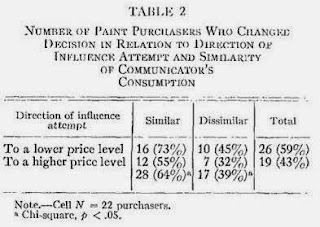The tiny berry with big benefits
Acai berries have recently been touted as the new and trendy superfood with anti-ageing and weight loss properties. The advertisement I created utilised multiple technique to convince people to purchase and eat acai berries including a rhetorical question, scarcity, just plain folks and the but that’s not all technique.
Firstly, the advertisement starts with a rhetorical question “do you want to know the secret to weight loss?” this immediately captures the readers attention as many people in society have a desire to lose weight. Bunkrant and Howard (1984) found that rhetorical questions may have benefits in advertisement as they not only arouse uncertainty, but encourage more intensive processing of the message. Furthermore, Zillman (1972) demonstrated the effectiveness of rhetoric elicitation by using a mock court trial. Undergraduates were presented with persuasive information about the criminal who was up for trial. Following this, they were presented with a conclusive message as either a statement or rhetoric question. The influence of the persuasive message was measured by the length of time the student believe the prisoner should serve in jail. Those presented with the rhetorical question gave shorter prison sentences, suggesting a rhetorical question provides a more effective persuasive message.
Secondly, the advertisement employs the just plains folks technique (Pratkanis, 2007) by showing a before and after picture. By using a normal, average looking women to take a before and after photo and attributing the dramatic weight loss to the acai berries demonstrates source-recipient similarity which in turn increases compliance. Festinger (1954) says this is due to the social comparison process: people have a tendency to turn to similar others as referents for their opinions on specific issues. Hence, if potential customers see the campaign girls being similar to them they will be more inclined to view the berries in a positive light and consequently purchase them. The evidence for this technique comes from a field experiment conducted by Brock (1965). In his experiment he asked salesmen to encourage shoppers to buy paint vastly different in price to their original choice. Salesmen did this by either portraying similarity or dissimilarity with the customer, specifically with respects to the salesman’s prior magnitude of paint consumption. Thus the independent variables were the salesman’s similarity to the customer and the direction of change in price level and the dependent variable was the level of compliance shown by the customers.
The table shows this was particularly successful. When there was perceived similarity between the salesman and the customer there was 11% more compliance than in the dissimilar condition. Essentially, people can be induced to but more expensive paint due to similarity in something as trivial as paint. This suggests that consumers will believe that if acai berries work for her, they can work for me.
Thirdly, by stating on the advertisement that you should “act now while supplies lasts” is utilising the scarcity principle to enhance sales of the product, and to persuade people to give it a go. The scarcity principle suggest that products such as acai berries are more valuable when they are less available. This adds value to a product, by reducing the availability of it. As argued by Cialdini (2009) this challenges people emotionally and cognitively where they feel they are loosing freedom. so are more likely to purchase it. The item is likely to be good due to how rare it is. An experiment by Worchel, Lee and Adewole (1975) confirms this. They asked participants to rate how attractive and valuable cookies were, depending on abundance and scarcity. Participants gave higher ratings to cookies when they were presented to them to be scare rather than abundant. Furthermore, they were rated as more expensive in the scare condition, suggesting they were more valuable. Therefore, this experiment provides evidence that the scarcity principle really works where items are seen as more attractive when their availability is threatened.
Finally, the advert highlights the other health benefits of taking acai which utilises the “that’s not all technique” which aims to convince the reader that they are receiving a multitude of benefits from the product in addition to weight loss. This consequently was included to make people believe they are getting a lot for their money. This technique has been found to increases sales of items dramatically, as displayed by the experiment by Burger (1986). In his study, he conducted a bake sale where participants were offered a cupcake and cookies for 75 cents or offered a cupcake for 75 cents plus the addition of cookies at no extra charge (the TNA condition). He found those in the TNA condition were significantly more likely to buy the cupcakes (73%) than those who were offered cup cakes and cookies in one bundle (40%). Burger’s finding suggests people are more likely to buy products when they are accompanied by TNA persuasion techniques because they feel they are getting more for their money.
Brock, T. C. (1965). Communicator-recipient similarity and decision change. Journal of Personality and Social Psychology, 1, 650-654
Burger, J. M. (1986). Increasing compliance by improving the deal: The that’s-not-all technique. Journal of Personality and Social Psychology, 51, 277-283.
Burnkrant, R. E., & Howard, D. J. (1984). Effects of the use of introductory rhetorical questions versus statements on information processing. Journal of Personality and Social Psychology, 47,1218- 1230.
Cialdini, R.B. (2009). Influence: science and practice. Boston : Allyn and Bacon
Festinger, L. (1954). A theory of social comparison processes. Human Relations, 7, 117-140.
Pratkanis, A. R. (2007). Social influence analysis: An index of tactics. The science of social influence: Advances and future progress, 17-82.
Worchel, S., Lee, J., & Adewole, A. (1975). Effects of supply and demand on ratings of object value. Journal of Personality and Social Psychology, 32(5), 906-914.
Zillmann, D. (1972). Rhetorical elicitation of agreement in persuasion. Journal of Personality and Social Psychology, 21(2), 159.





No comments:
Post a Comment
Note: Only a member of this blog may post a comment.